Bedouin Camp – Dakhla Oasis
Egypt has been the story of the fertile 5% territories alongside the Nile for much of its history. For the rest of the 95% of the country, the Egyptian Sahara is the most varied desert on the planet. It features sand sheets, rocky canyons, rock art paintings, rich oases, and century-old traditions. Due to its farthest location, few people venture into this part of the country. Still, the ones who do that are rewarded with the richness and hospitality of the Desert Oases.
The New Valley cuts through the Western Desert, Egypt’s largest and most sparsely populated region. It is named after the New Valley Project, which aims to irrigate parts of the Western Desert with water from Lake Nasser (somehow doubling the Nile Valley). The oases in the New Valley are in the low parts of the desert, nearer the water table, and each oasis sits on its own depression.
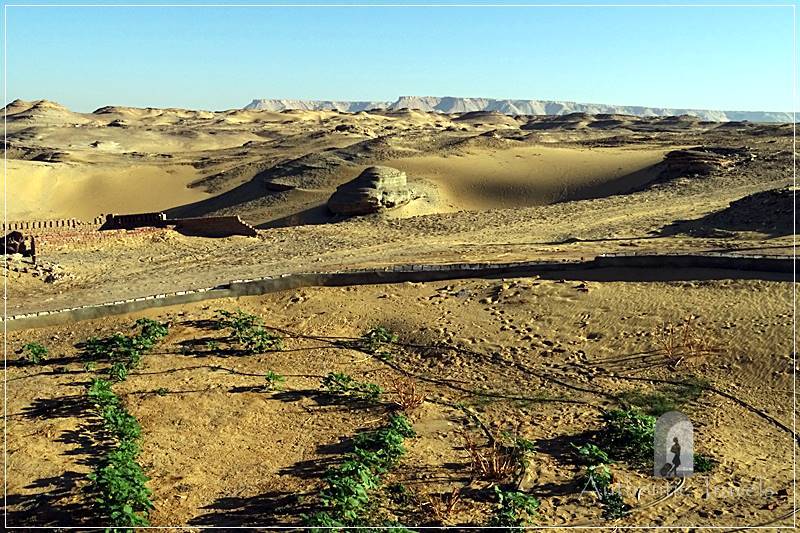
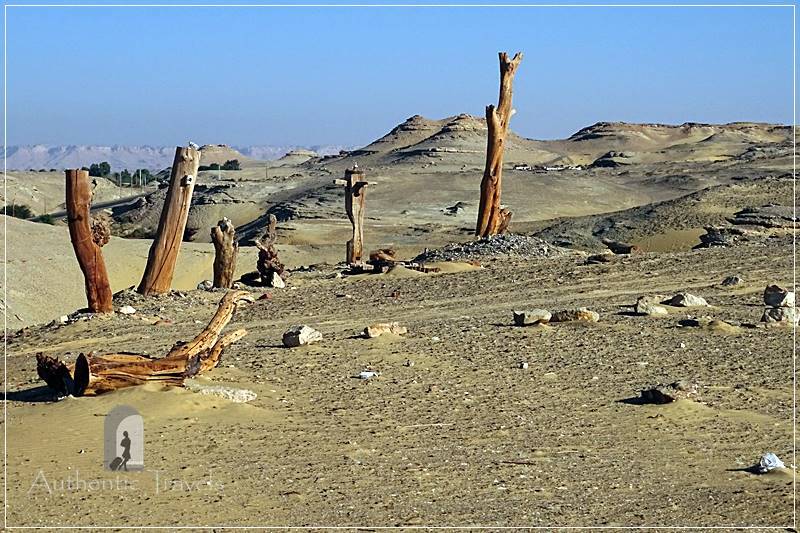
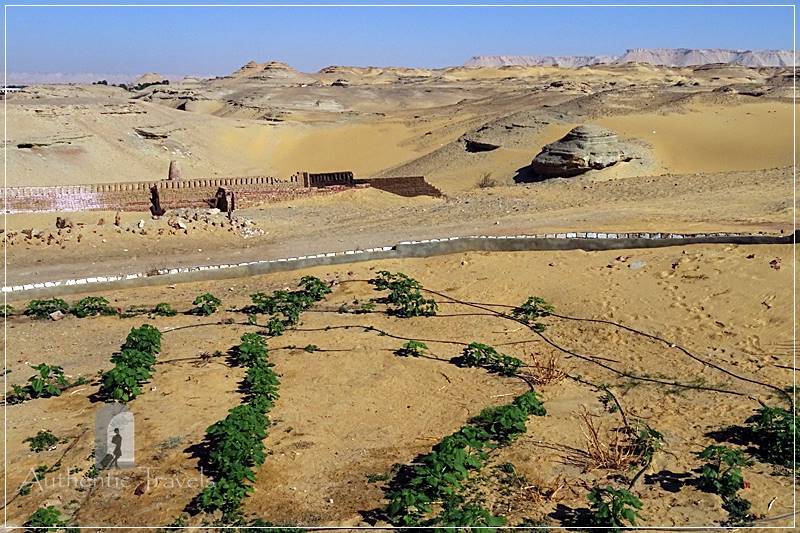
Dakhla is one of Africa’s oldest continually inhabited places and among the most remote oases in the New Valley. It measures approximately 80 km in length and 25 km in width. As one of the largest oases, it includes infinite palm groves, camel farms, mud-brick villages, and numberless hot springs. Coming from Cairo or Baharyyia and Farafra Oases, Dakhla starts with the ancient mud-brick village of el-Qasr. It then continues with Mut village in the middle of the oasis and ends with the mud-brick village of Balat on the road towards Kharga Oasis and Luxor.
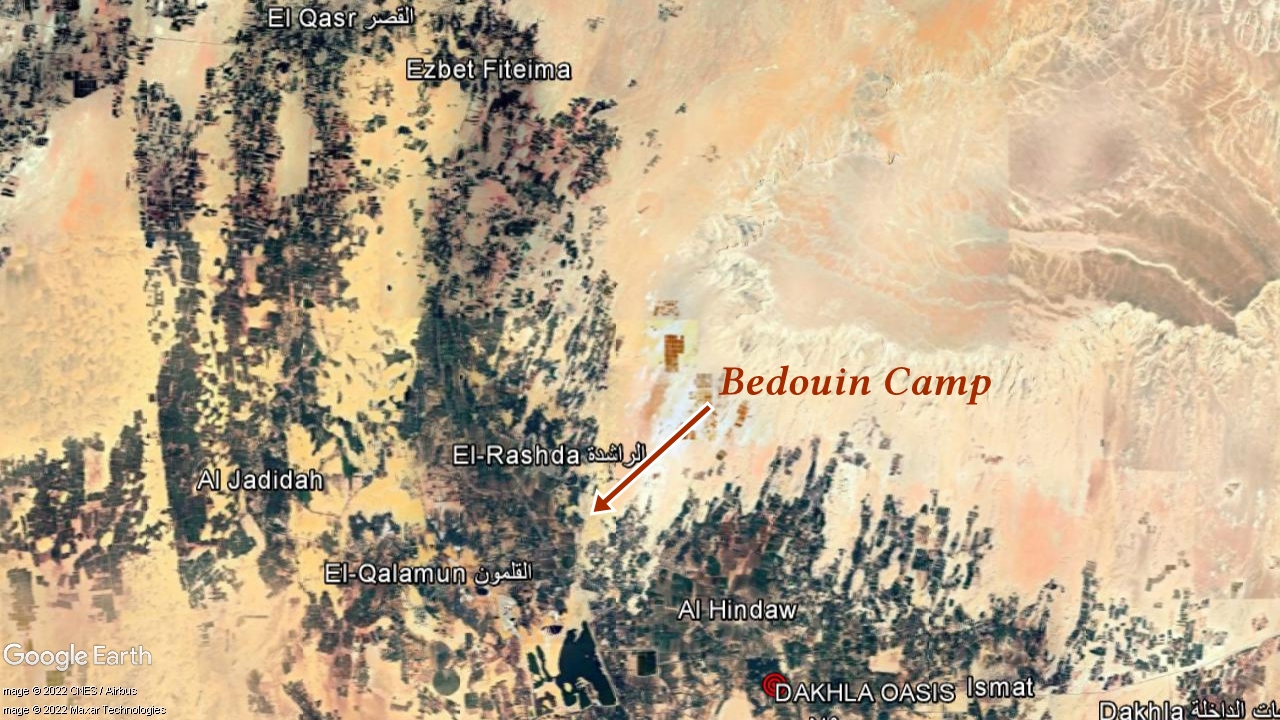
As you come from el-Qasr, before reaching Mut village, turn left on a countryside road pointing towards the Bedouin Camp. You will soon get to El Dohous small village, and see a large whitewashed complex uphill on the right. Enter the garden and park your car amidst colored flowers and white-domed buildings. The smiling Bedouins will immediately welcome you, and they will undoubtedly invite you to admire the sandy surroundings while sipping a Bedouin tea.
Bedouin Camp – The History
The Bedouin family who started the camp belongs to the Raschaida Family from Saudi Arabia. About 250 years ago, the great-grandfather Zeydan left his country and came to Egypt. He stayed in different places all over Egypt and eventually settled with his family in El Dohous village in Dakhla Oasis. At that time, they had a lot of camels, goats, and sheep, and the oasis inhabitants were quite afraid of them in the beginning. So they started to help the farmers by trading dates and other goods with a camel caravan from Dakhla to Assiut. This way, the first routes appeared in the desert between the oases of Kharga, Assiut, and Farafra.
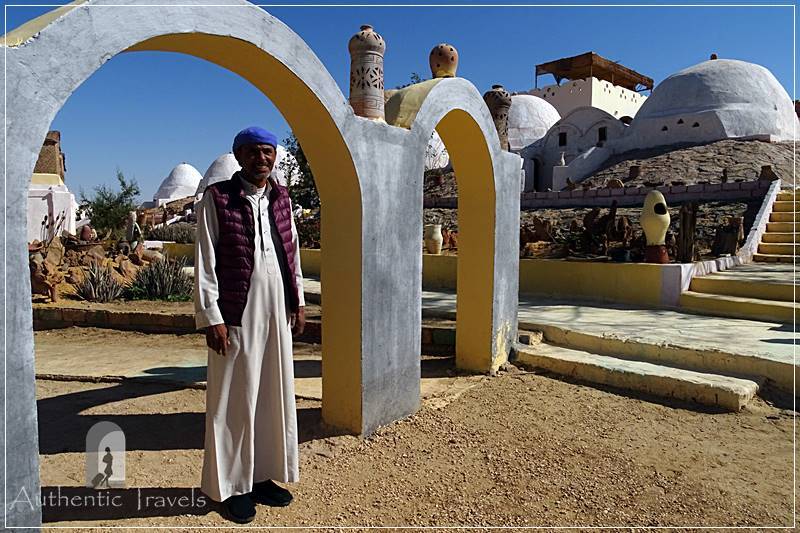
Over time, the local lifestyle changed, cars replaced the camels, and technical development arrived in the oases. The Bedouin family started to work in the fields. By 1980, the first foreigners were brought from the tourist office in Mut to El Dohous to camp with their cars and show them camels and real Bedouins in the oasis. The Bedouin family welcomed the foreigners in their homes, like they do with all their guests, and gave them food, tea, water, and everything they had. According to their Bedouin hospitality, they couldn’t charge them. Hence, the guests asked the Bedouins to build a special place for visitors – this is how the idea of a Bedouin complex appeared.
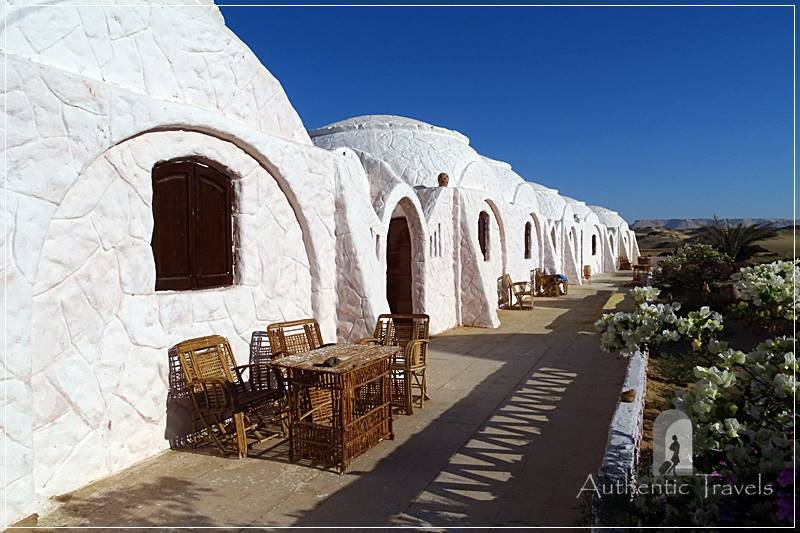

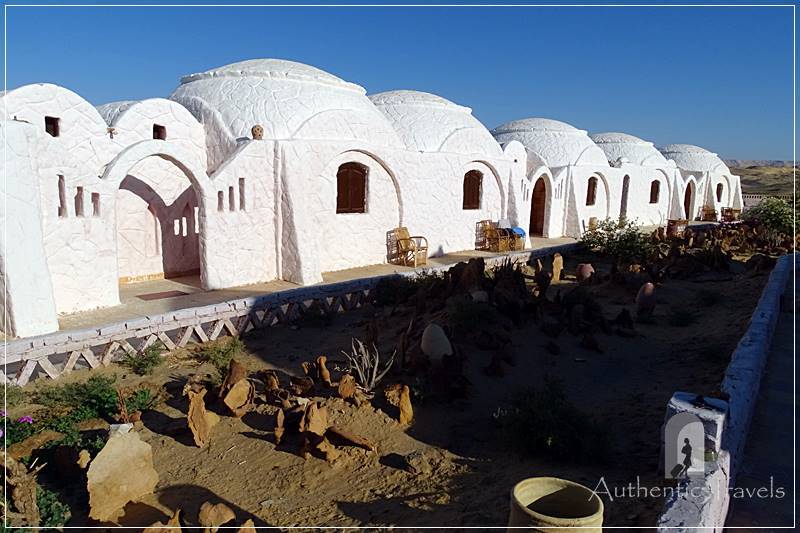
The Bedouins used their ancestral knowledge of the desert and applied everything they learned from nature in their camp. Nowadays, the Bedouin Camp is like a small oasis in Dakhla Oasis. All buildings are made of natural materials, resembling life in the desert and the communion between man and nature.
Bedouin Camp – Architectural design
The Bedouin family chose a place on a little hill close to El Dohous village and started with six simple huts on the right of the entrance. These huts were made of palm trees, leaves, and natural materials, resembling the local mud-brick houses. However, as they were small and limited in number, they could accommodate only a few guests with fundamental requirements.
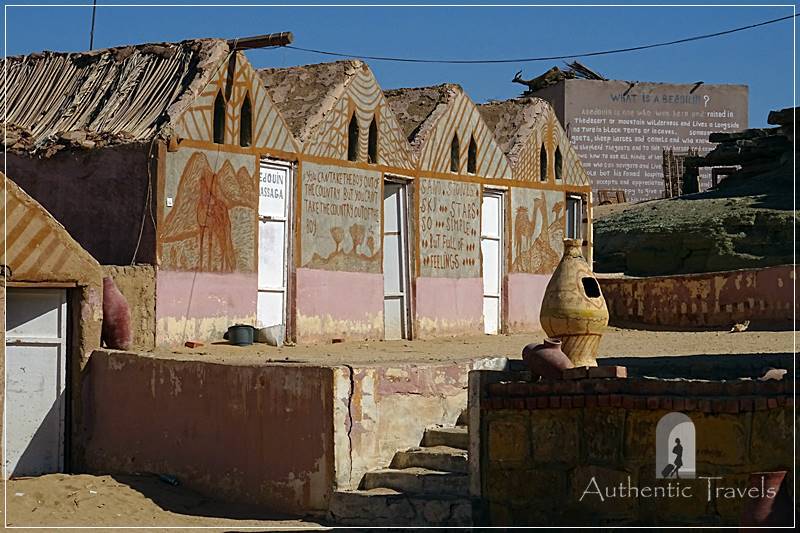
The place grew bigger and bigger, and in 2004, the Bedouins built three new houses with eight en-suite rooms each, a rooftop garden, and a terrace. They also built two parallel rows of 12 whitewashed chalets with high-round roofs in Islamic style. The domed volume of these chalets is like a cave on the hill to provide more air in hot summer and to keep the inside chill. In the garden, there’s also a big camping area for individuals on tour with a car, a hammam, a hilltop restaurant with a roof garden and desert views, and a Bedouin bazaar selling handicrafts at the entrance.
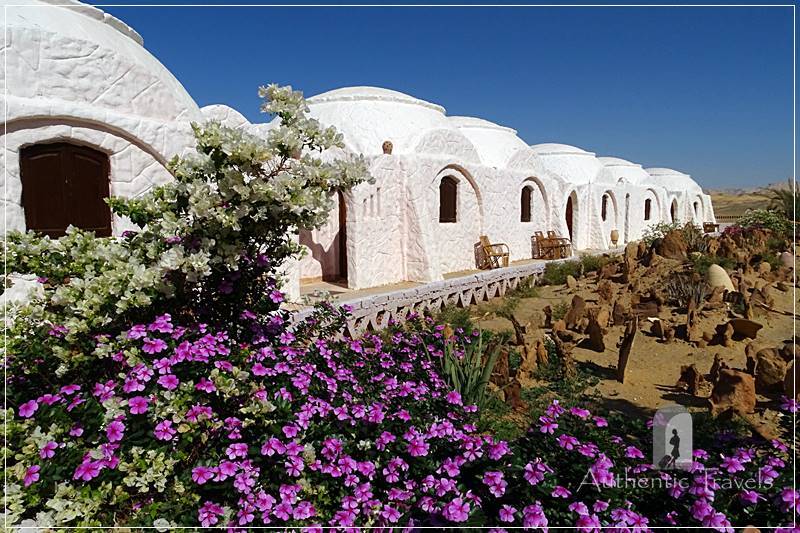
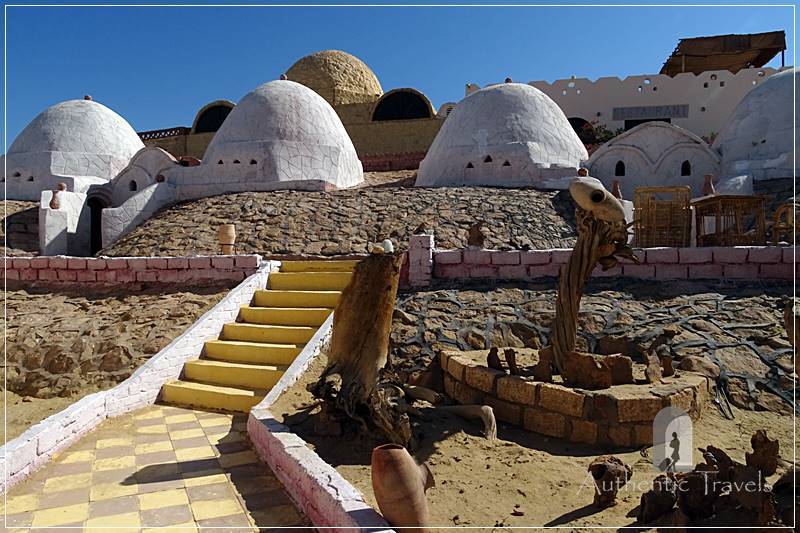
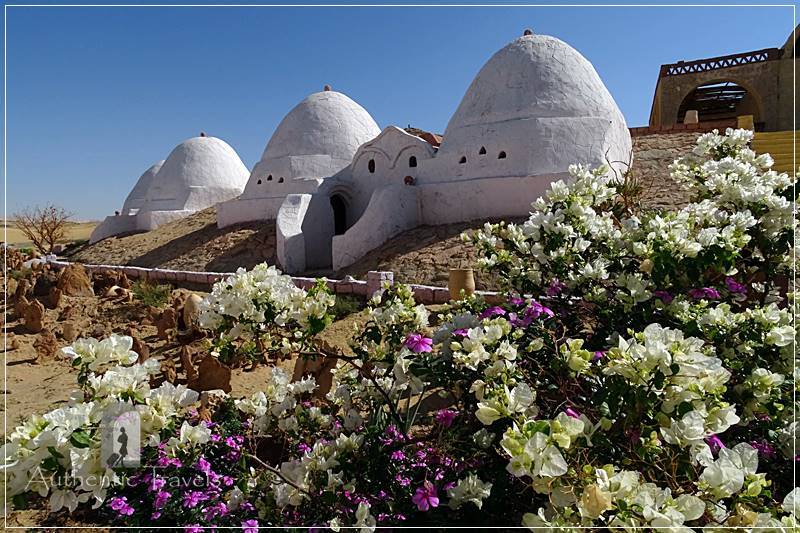
Colorful flowers grow between the whitewashed cottages and bring life to the camp surrounded by the desert starting right at the back of the garden. Flowers and desert, this is a contrast easily appreciated when you sit on the terrace admiring the desert views. The camp has many spaces for relaxation, like a stone garden, a canopy, and a Bedouin tent with a fireplace.
In the future, the project will offer 36 new modern rooms, a new relaxing ground, and a swimming pool.
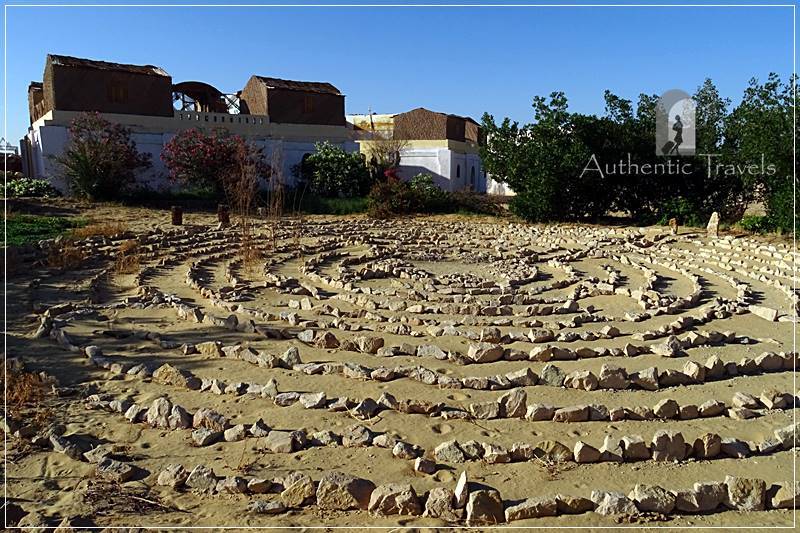
Bedouin Camp – Traditional Lifestyle and Local Customs
The Bedouin traditions go far beyond domed cottages and rooftop restaurants. First of all, Bedouins mean hospitality and ancestral traditions. The Dayf Allah (means ‘guest from god‘) meeting room encourages guests to sit together with Bedouins like a big family in a traditional style. In the evening, people sit around an open fireplace or in a Bedouin tent with an open fireplace. This last one is used primarily in winter when it gives more warmth and protection against the wind. They serve Bedouin tea made on an open fire and shisha water pipe.
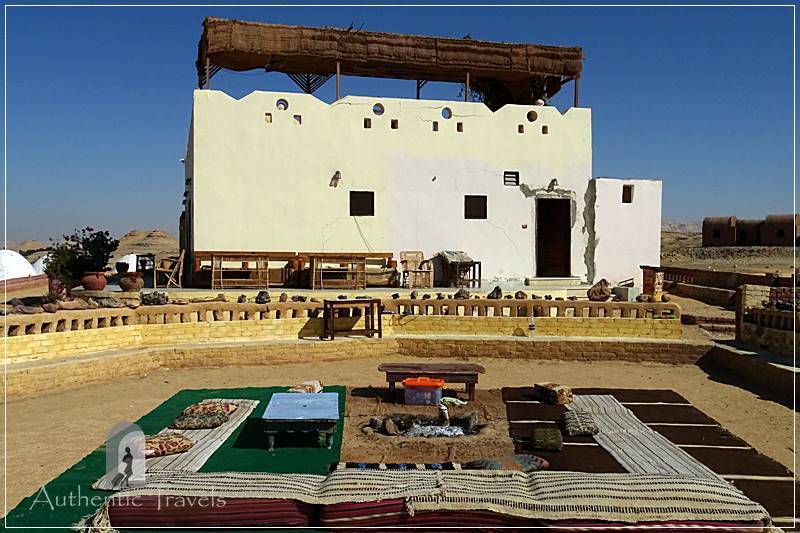
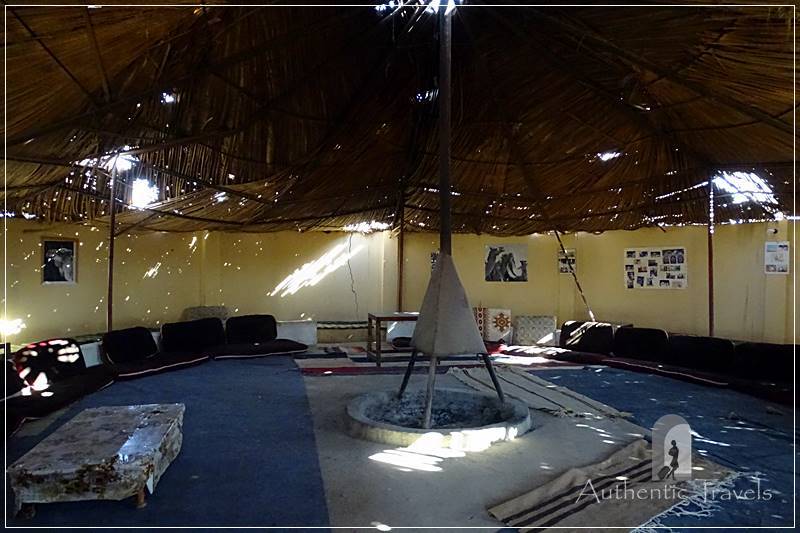
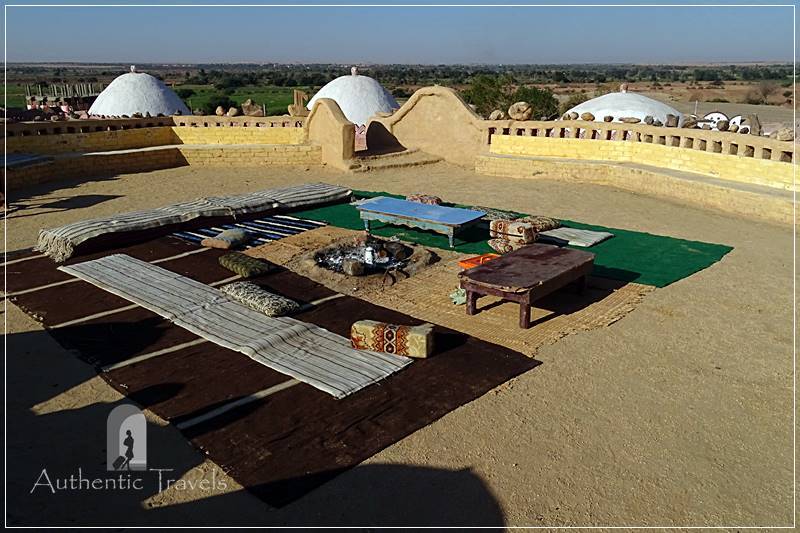
Bedouin traditions come from the relationship between man and desert and man and animals. For example, Bedouins saw how the camel made a hole in the sand, so they started to do the same (a hot sand bath). Put yourself in the hot sand, especially if you have rheumatism or feel pain in your bones or whole body. The sand will lick the pain and harmful fluids out of the body.
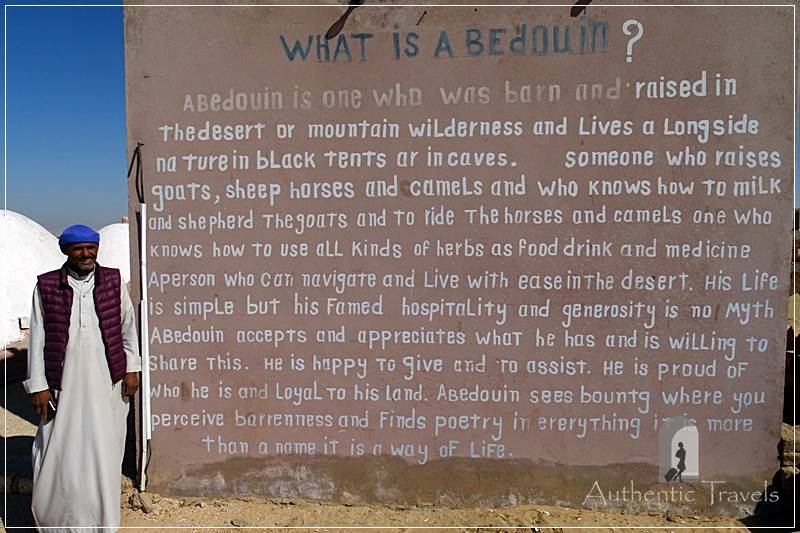
There are many hot springs with different temperatures in Dakhla Oasis. For example, there’s a hot spring with 42 degrees outside the Bedouin Camp, just across the street. The hot springs are great for healing your body in winter and are a natural refreshing source in late summer. The natural minerals (iron, sulfur) take the terrible fluid out of the body and make the skin soft and healthy.
Bedouins take camels like friends, and they learn how to cure themselves from these animals. For example, all the herbs camels eat come into the milk of the mother camel. Drinking camel milk makes you feel healthy and strong. It helps with many diseases, like Hepatitis C, stomach pain, sexual disability, digestion, and immune resistance.
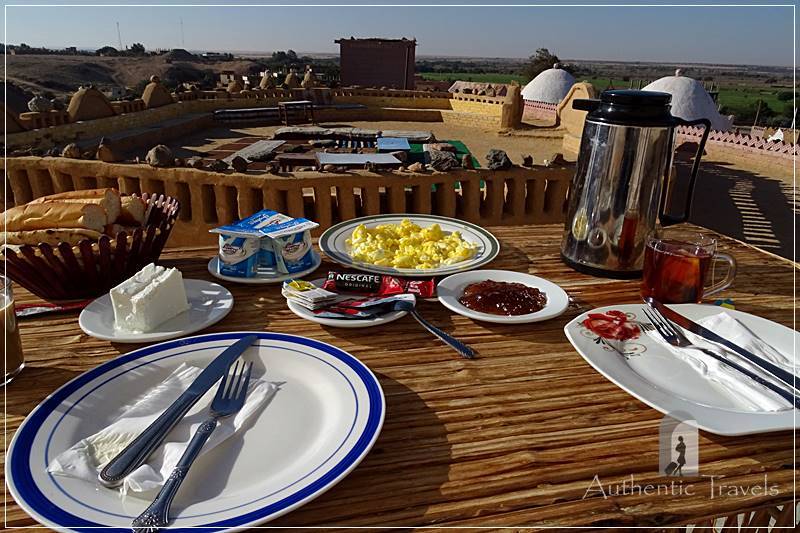
The Bedouin bread is made without yeast, and this cures stomach pain. Deshisha is special wheat paired with a soup that helps with stomach pain. Also, Guava tree leaves are recommended if you have a cold. Finally, half-il-bar is a herb from the desert used for making tea and cleaning the kidneys. Handal is a fruit from the desert that you can put under your heel and helps against rheumatism.
Bedouin Camp – Personal Experience
We discovered a new world of peace and serenity when we arrived at the Bedouin Camp. The stillness of the surrounding dunes created a hole in time. We sat on the terrace in front of our room and sipped our glass of Bedouin hot tea. This was a true moment of living in the present. It seemed like the whole camp supported us to sit, admire, and take it all in. We enjoyed the calming and relaxing atmosphere in the camp, the simple combination of colorful flowers and whitewashed units, and the hilltop restaurant with stellar views of the desert.
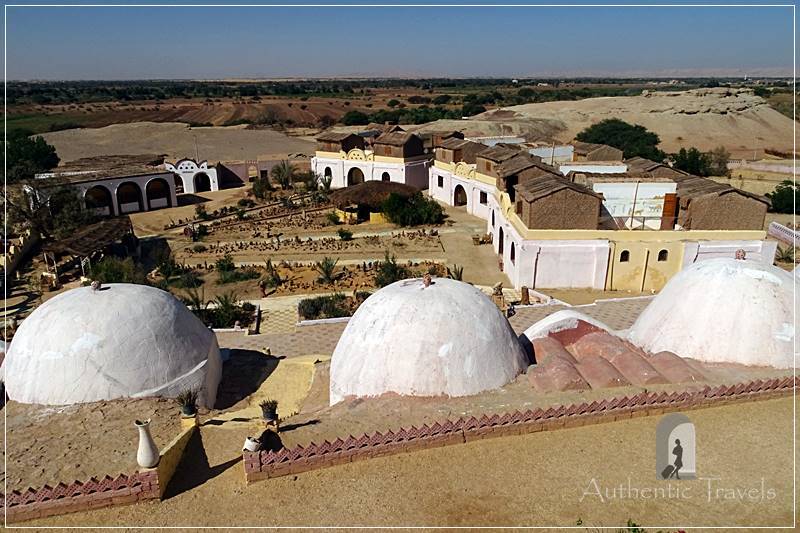
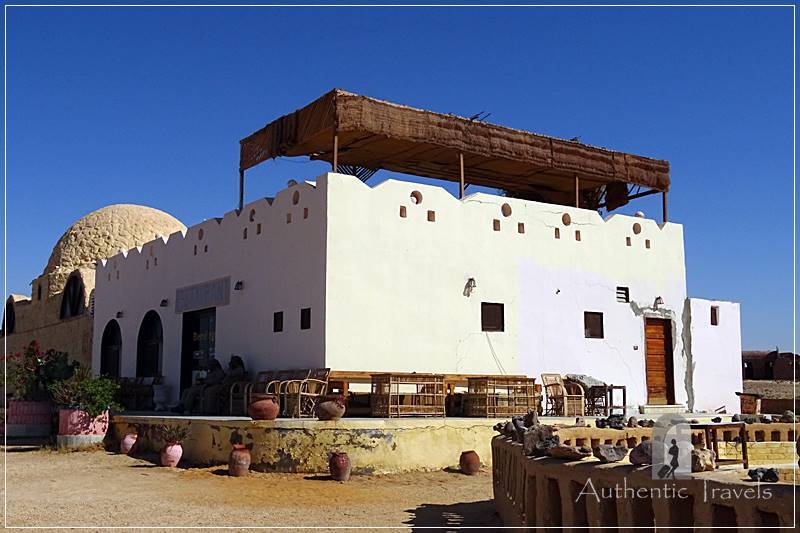
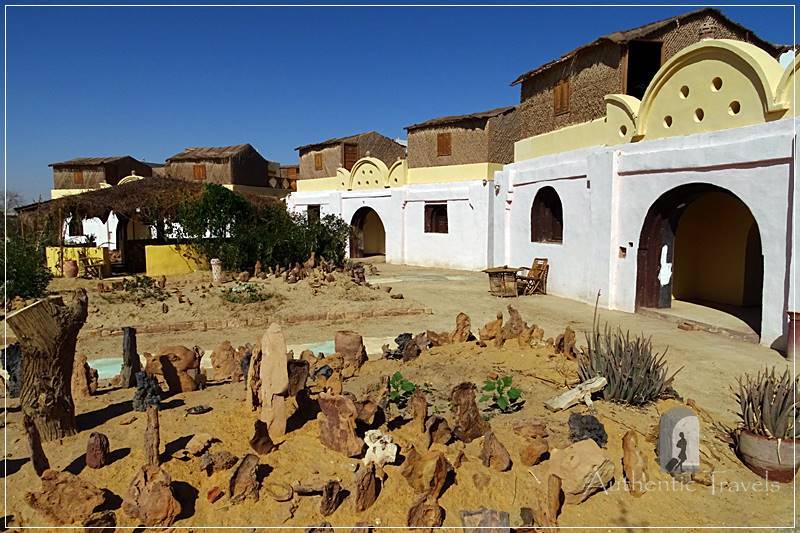
The mosquito challenged us in the evenings, even when sitting around the fire. Still, the friendly chatting with the Bedouins in the village made us firm. We bravely stood and enjoyed the Bedouin’s stories around the campfire. Bedouins have a traditional way of being easy talking to anybody, narrating about anything happening in life and beyond. You feel close to them, and it’s easy to open your heart in their presence. They are some of the most hospitable people in the world and are always there to help and support you with anything you wish.
It was tough to leave the Bedouin hospitality, but we moved further with our hearts full of joy, love, and new connections.
The Bedouin Camp can be found on their website.
Some more photos from the Bedouin Camp, Dakhla Oasis (New Valley, Egypt):
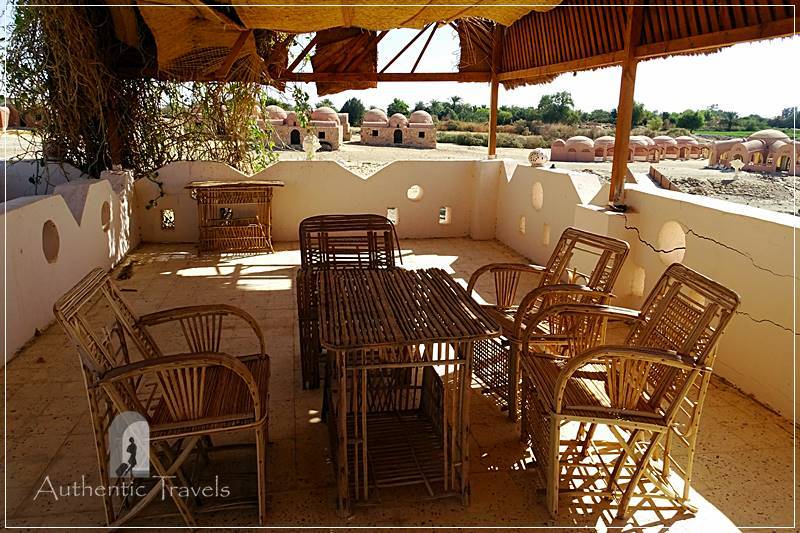
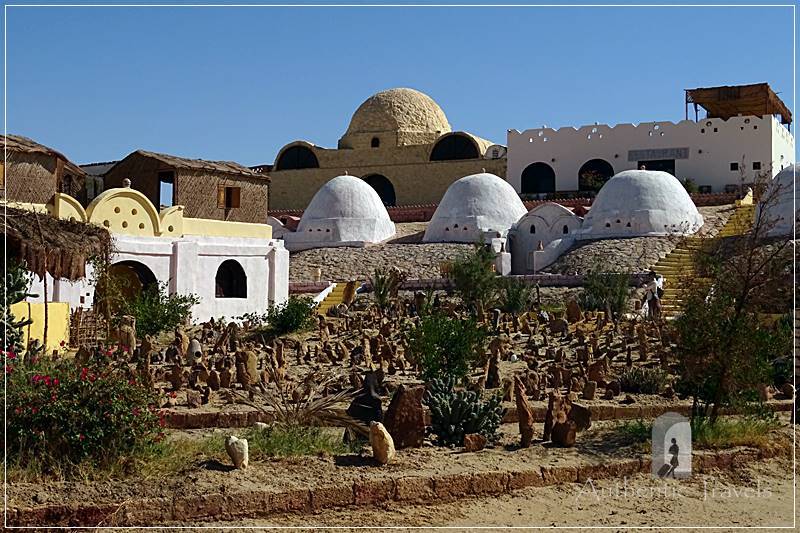
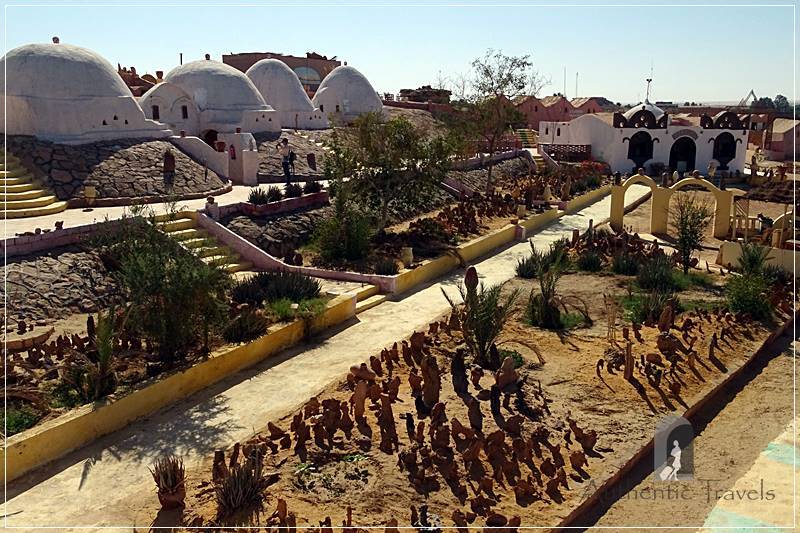
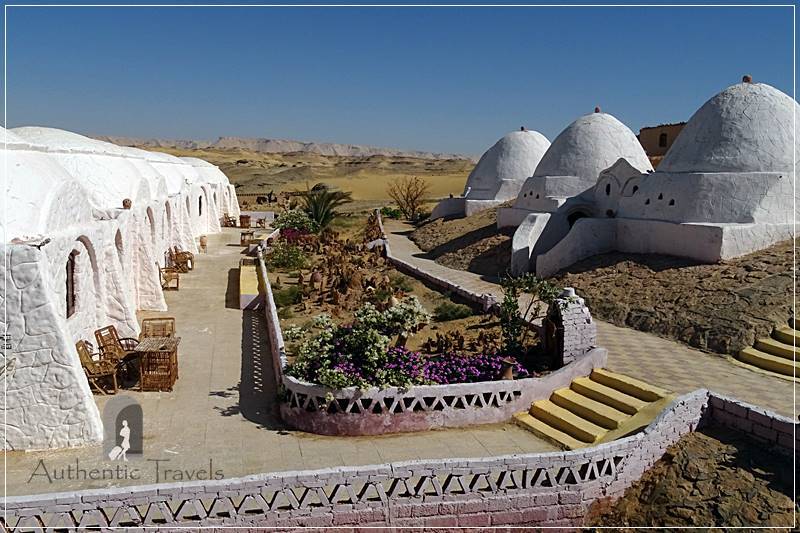
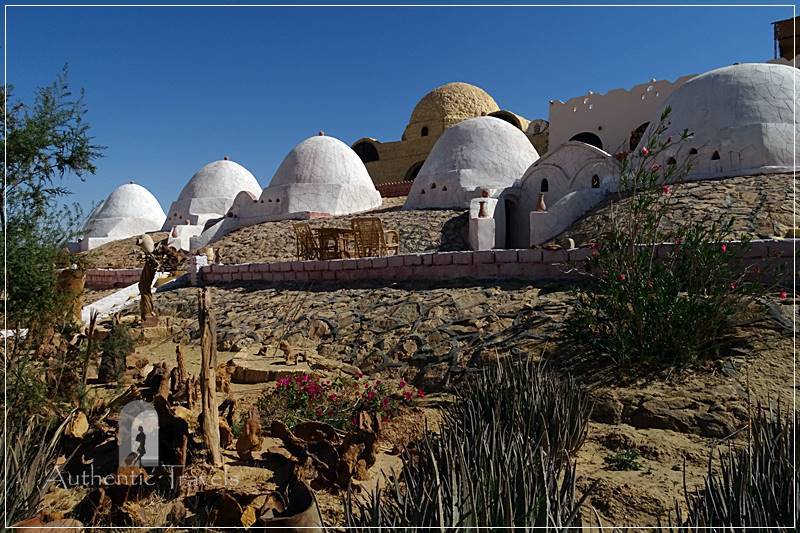
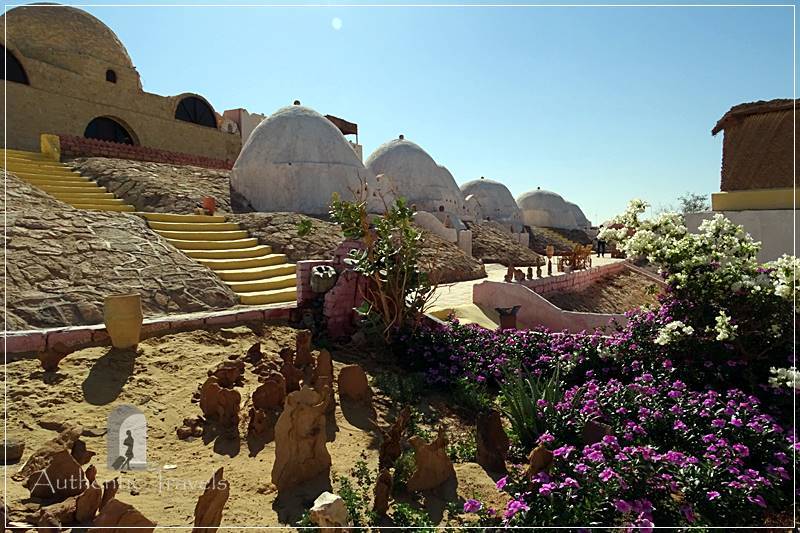
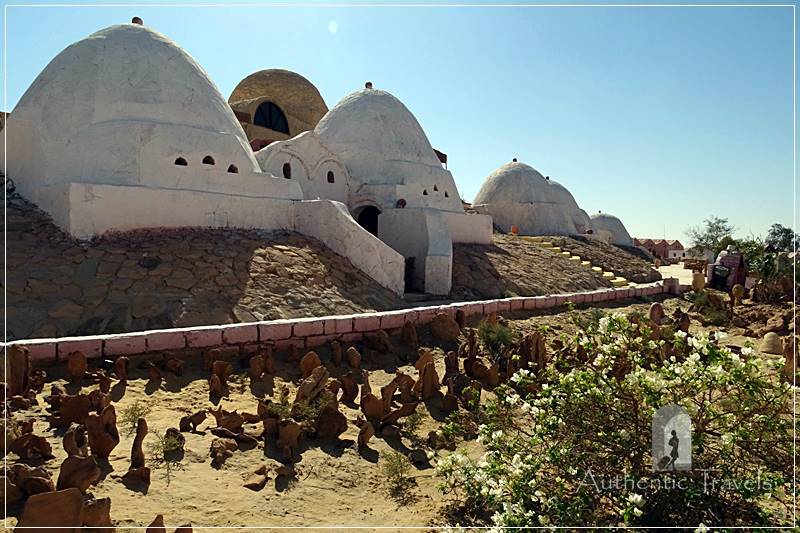
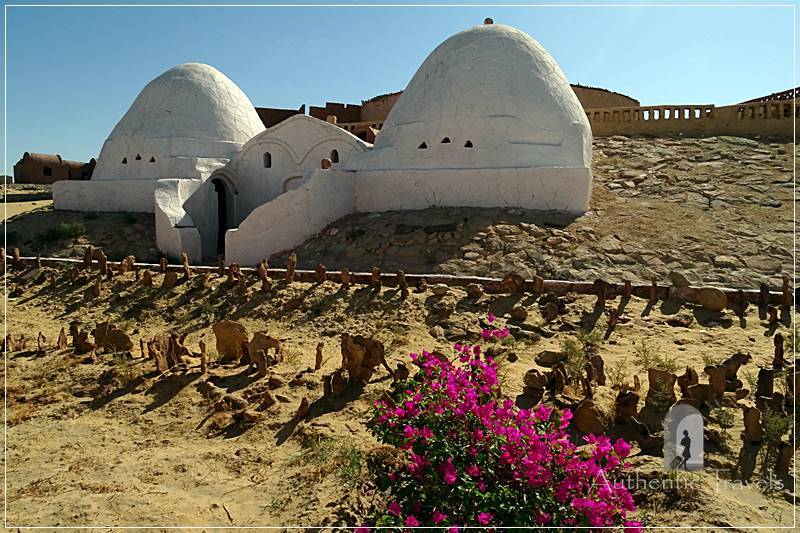
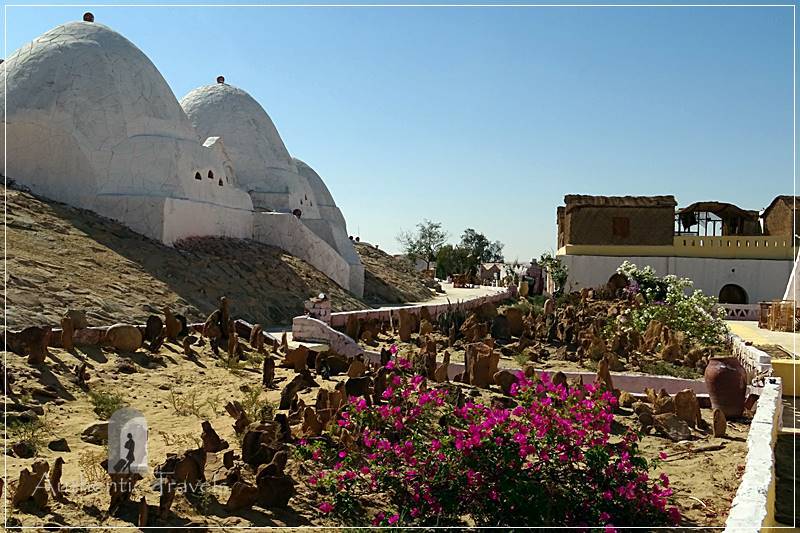
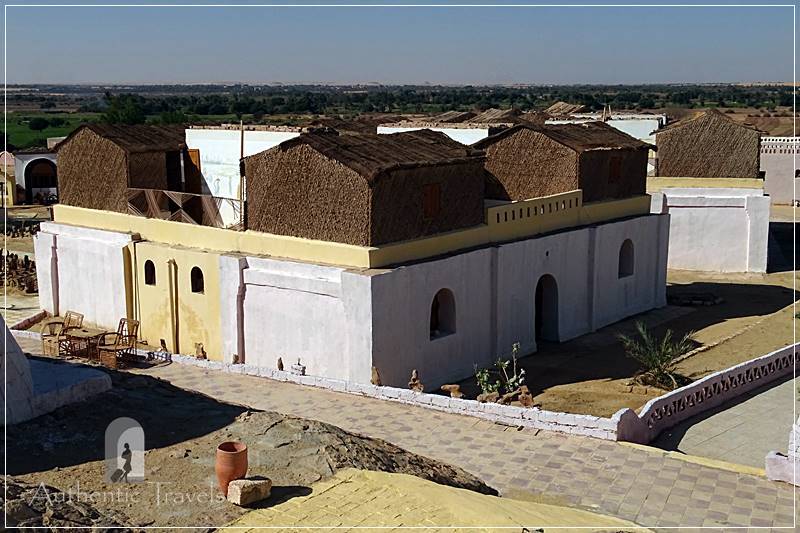



I would like to have an experience like this, where time stands still and you can relax and connect with the people. I’m surprised just how beautiful this desert oasis is, with the colorful gardens and whitewashed domed cottages. How wonderful it must have been!
It has been an amazing experience, indeed. I have very good memories from there! It’s a must-see place for anyone in love with the desert oases.
The environment looks just like what I envisioned it would look like but the camps look a lot more sophisticated that what I expected. I’m sure the stay is quite comfortable and suited for western standards like eating a nice meal on a rooftop deck to enjoy views and probably the nice trade winds later in the day?
Having breakfast on the rooftop restaurant was like a dream. They seem sophisticated, but because you are in the desert, it’s a simple life, not luxurious. For dinner, we had to eat inside because of the mosquito.
What a fabulous experience and so great to have an authentic stay at this Bedouin camp. It is interesting that the great grandfather settled here so many years ago and that the family have remained and built up the camp. I love the domed architecture, almost like some I have seen in other parts of Africa like Tunisia.
I also love the domed architecture – it’s something so different than what we know in Europe. As a matter of facts, I am soon heading to Tunisia. I hope I will find domed architecture there, too.
This is part of the world that I sadly know very little about. So I find it fascinating that this is truly off the beaten path for many travellers, yet it’s stolen your heart. The story of how the Bedouin Camp came to be is truly special and that spirit of hospitality appears to continue through the decades. I love the architecture of the camps, the white-domed camps in stark contrast to the desert colours. Sounds like a trip of a lifetime.
Actually, in the desert you can see only dunes and rocks. For many people this might be boring, but if you know to pay attention at the local lifestyle and people, a whole new world opens up to you.
It is quite educational and enjoyable to read. It sounds like the family did an amazing job to the camp. Quite story.
I am so happy you enjoyed the reading Ossama.
What a great place to visit! The stone garden looks especially interesting. I’m sure the fact that not a lot of people visit makes it even more special when you go. I’m tired of visiting places that are over-toured!
I also like going to remote destinations. However, i wouldn’t miss the famous ones because they are famous for a reason. But the tourist crowds negatively impact the experience … unfortunately. And the high prices too ! 🙁
What an amazing place! I wish I knew about it when I visited Egypt, back in February. The closest I got to similar architecture was the Nubian village, in Aswan. I remember how friendly the locals were and I met a man named Zeydan as well, who invited me to see his house and then offered me dinner on the rooftop of his home. I would have liked to visit a bedouin camp when I was there, it looks like such a unique experience to get to know a different culture.
Maybe if you go to the Egyptian desert again, you’ll have the chance to visit the Bedouin Camp. It’s truly a unique place to stay. And the Bedouins are out of this world, something you must see!
I loved that self-described definition of bedouin in that photo. What a beautiful concept of living simply and in harmony with the land, and having such pride in that life and willingness to share it with guests. much less, those domes look awesome! I had a bedouin experience in Jordan and am now curious to try the Eygptian way.
I loved the description of the Bedouin too. Youssef was so modest that he didn’t want to stay in the photo, but how can you take a photo saying something about a Bedouin without having a Bedouin in the photo?!
The Bedouin camp in Dhakla oasis seems to be a perfect place for peace and quiet and destressing after busy city life. I love the design of the hut-shaped houses and architecture here. It is impressive that the huts are made of natural materials like palm trees and leaves. The whitewashed chalets look majestic. I am surprised how you dealt with the mosquito challenge. It must have been a great experience immersing in the Bedouin life experience. 🙂
Immersing in the local culture is a true experience every day. This is why I travel how I travel. I loved this place so much and I would go back there at any moment.